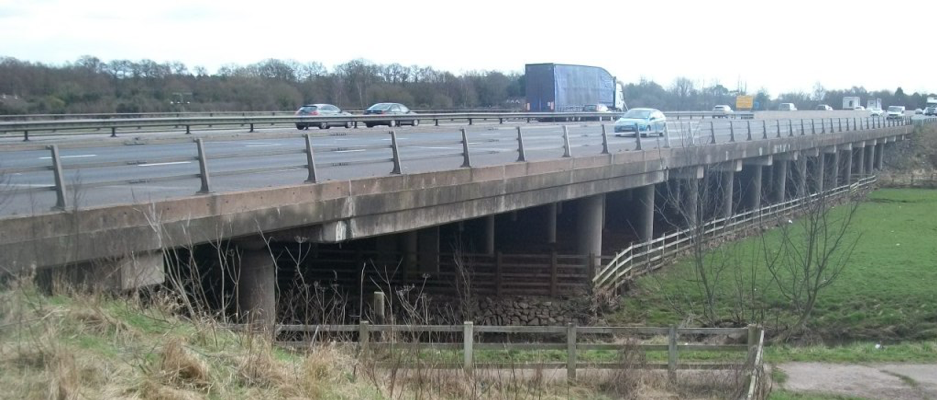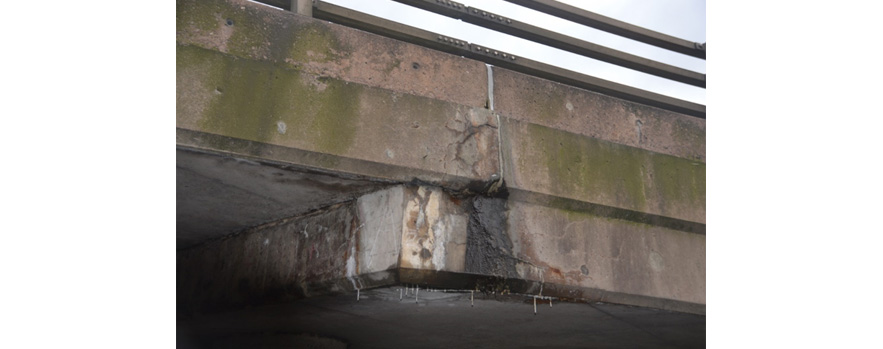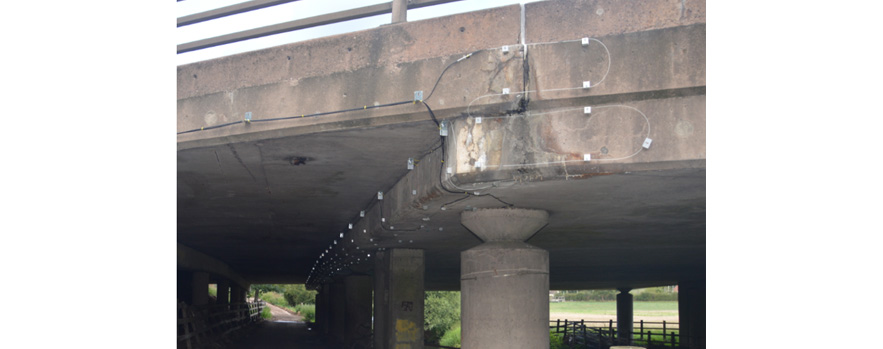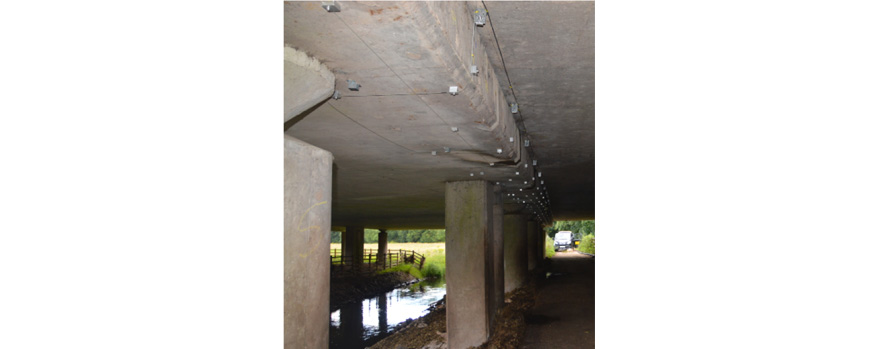
Submitted by L. Millard on Wed, 12/08/2020 - 09:06
The M6 motorway bridge crossing over the River Penk in Staffordshire, UK
A team of CSIC researchers have installed a fibre optic strain sensors network across the length of a half-joint concrete bridge carrying the M6 motorway over the River Penk in Staffordshire, UK. The bridge has deteriorating half-joint connections, where concrete spalling and reinforcement corrosion is evident.
Ultimately, this project aims to provide an early warning monitoring system that will enable improved maintenance strategies and systems for ageing highway assets Dr Haris Alexakis
The installation is the first phase of a phased project that will identify emerging sensing technologies and approaches for the structural assessment and deterioration detection of static highways assets. The project, which is a collaboration with Highways England, will specifically explore the capabilities of acoustic emission (AE) sensing technology for the structural health monitoring of concrete bridges.
“Ultimately, this project aims to provide an early warning monitoring system that will enable improved maintenance strategies and systems for ageing highway assets,” said Dr Haris Alexakis, who is part of the team installing the fibre optic strain sensors. “CSIC has developed a multi-sensing system, comprising AE sensors, fibre optic strain sensors and environmental sensors. AE sensors detect material degradation such as cracking in concrete. Detailed strain measurements from the fibre optic sensors will allow for validation of AE data and verify applicability of the system for damage detection. The data from this monitoring campaign will allow us to capture the long-term deformation of the half-joint and the impact of seasonal variations on the structure.”
Side view of the concrete half joint on the northbound direction prior to installation, showing moisture accumulation and cracking
Side view of the concrete half joint after the installation of the fibre Bragg grating (FBG) sensors network along the transverse direction of the bridge
The FBG sensors are located between the aluminum clamps to monitor dynamic strain variations in the longitudinal, transverse and vertical bridge direction at multiple locations in the half joint
The first stage lasted approximately 10 days and the works involved the installation of the sensors on the joint. During the final stage of the installation, CSIC will mount the AE sensors and complete system calibrations to enable the continuous streaming of data.
Half-joints regularly feature in concrete bridge design due to their geometrical configuration allowing for easier construction. However, these joints are susceptible to corrosion and cracking which can result in catastrophic failure. Sensors installed along the 40m-wide half-joint connection will detect weak regions and underlying deterioration such as reinforcement corrosion and internal cracking, providing critical information that is not accessible through site inspection. The accuracy in detection of weak regions and damage will be assessed through correlation with fibre Bragg grating (FBG) dynamic strain monitoring. Data from FBG temperature sensors and a weather station installed on the bridge will be used to decouple expected seasonal responses from structural deterioration.
Dr Nikolaos Tziavos said: “The structural condition of motorway bridges is commonly monitored through periodic site inspections, which result in significant cost and traffic disruptions that may be hazardous to road users. Even if these inspections are enhanced by conventional crack monitoring or surveying methods, the underlying deterioration in critical structural members is hard to assess.”
In the longer term CSIC will develop a systems-integration approach that brings together multi-sensing systems, ICT, computer vision technologies, cloud data management, statistics and big data analytics which may offer a better understanding of underlying deterioration and overall structural performance, enabling effective structural alert systems for asset management.
• Read more about CSIC’s ‘Systems integration for resilient infrastructure’ project on page 30 of the CSIC Annual Review 2020



